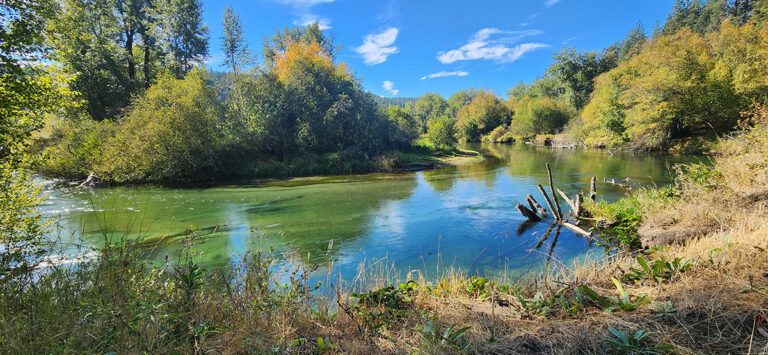Cocktails are the new wine, a culinary vehicle to experience the complexity of our planet. Their ingredients are often derived from potent botanicals, thus a great use for wild edibles. Ecologically, cocktails are a way to sample native plants without decimating them – a sprig opposed to a plateful. And, that brings us to cow parsnip.
For most of my life, I thought cow parsnip was poison hemlock. As a child on the California coast, I spent many afternoons hiking around with a dull sword, i.e. a stick, chopping them in half. But it turns out, like many altruistic endeavors, I had bad info. Water hemlock is deadly poisonous and in the same family but is easily separated by its diminutive stature and lacey leaves.
The first time I ate cow parsnip was high in the Bitterroot Mountains alongside a trickling stream with my partner. Though unnerving to break old beliefs and take the first bite, now it’s a trailside staple.
Identification is simple once you know its large, playful-looking form. It grows near streams, seeps and springs in the forest. Cow parsnip is generally 4-6 feet tall, and the leaves divide into three, pointy-lobed sections collectively over a foot wide. The stalk is a ribbed tube. It’s best to harvest before the expansive umbrella shaped flowers emerge.
Called Wamush by the Kootenai, this is one of the easiest plants to collect. No digging, curing or cooking required. Just cut off a section of stem, peal the celery like strings and you’re finished. It’s crunchy with a medicinal parsley flavor. Pick when young before the stem becomes too fibery. The timing of this depends on elevation and can extend into mid-summer in subalpine habitat.
Cow parsnip’s herbal flavor melds with botanical-based drinks like martinis and bloody marys. The stem is hollow – a crunchy vegetable and giant straw all in one. It’s also wide enough for bubble tea, though I haven’t heard of anyone trying this yet. For cooking suggestions, check out the Wild Food Girl blog: Wildfoodgirl.com/2011/cow-parsnip-for-breakfast-dinner-dessert.
Worth noting is the amazing variety of insects that toil around on the flower heads. One or two clusters are usually teaming with a miniature world of exotic creatures: butterflies, bees, beetles, etc.
There is also one point of caution. Cow parsnip exudes a toxin that if left on your skin and exposed to sunlight can cause an itchy rash and even persistent blisters. The flowers, seeds, leaves, and roots have higher amounts of the irritant, furanocoumarin. It’s only released when tissue is damaged, so brushing against the plant is fine. Reactions are most common when people are pulling or weed eating them in summer attire. Just be thoughtful and wash off with soap and water if necessary.
Identifying Features: Human height with central tubular stem, big oak/maple-like leaf and parasols of white blossoms often covered in a dizzying array of insects.
Look-alikes: Giant hogweed has higher toxicity and is an enormous member of this genus growing in coastal areas and further north. Know the deadly hemlocks which are easily differentiated.
Culinary Attributes: Savory and crisp. Can be used fresh on the trail, sparingly in salads or as a garnish for your summer cocktail. Cooked, cow parsnip is suited for quiche and casseroles.
Liquor Pairings: In any vegetable or herb concoction and with clean, dry drinks of vodka, gin or blanco tequila. //













